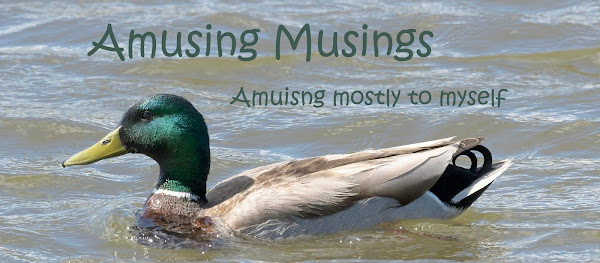Our first state park of the trip was Henry Cowell Redwoods State Park, near Santa Cruz. This is a modest woodland as redwood forests go, both in area and number of giant trees, but it is nonetheless a joy to see trees that were sprouts more than 1,500 years ago standing staggeringly straight and tall. The tallest is about 281 x 17 feet (at its base). The park wasn't busy that afternoon, allowing us to walk peacefully along the wide, duff-paved paths.
Happily, the enclave of old growth is still attracting new generations of redwood-gazers, here taking a doubtless well-earned rest on a convenient redwood bench.
Not far from Henry Cowell, along the Pacific coastline, is Point Lobos State Reserve, set aside because of its historical whaling and fishing legacy as well as its spectacular scenery and abundant marine wildlife. It features this 1851 whalers' cabin, now serving as the Whaling Station Museum. As noted in the brochure, "[i]ts contents represent hundreds of years of occupation of Whalers Cove by indigenous peoples, Chinese fishermen, Japanese abalone fishermen, Portuguese whalers, and others." Its exhibits certainly bring home how phenomenally rich and important the natural resources are along that stretch of ocean.
This is a quiet spot in the Cove below the cabin where moon jellies have drifted into the kelp (Nereocystis leutkeana). We had of course aimed to see sea otters, which make the cove their home, but it was not to be this time.
...and typical California wildlife. These are harbor seals (Phoca vitulina
richardsi), clearly enjoying the sun on a little outcrop close to shore. Not disturbed by the presence photographers and other polite on-lookers (and of course it's illegal
to pester or harm them), they spend untold hours lazing in what
look like terribly uncomfortable positions on the safety of offshore rocks. One unusual characteristic is their
coloration, which varies from white with Dalmatian-dog spots to brownish gray
to charcoal with white spots. Some even have a distinct bluish cast to their fur.
Farther to the south, near the little town of Cambria, is the Piedras Blancas State Park with its remarkable elephant seal (Mirounga angustirostris) rookery. The elephant seals spend half the year or more out of the water, shedding their skin and fasting on safe sandy beaches. When we were there the females and juveniles had arrived; the males, with their exaggerated proboscises, were still out feeding in the ocean. Watching them was very entertaining nonetheless.
They hang out in enormous piles, mostly snoozing, snoring, and grousing at one another as they jockey for a comfortable place amongst the resting bodies between naps. Grumpy as they seem I think the one in the middle just told a good joke.
Sometimes they look like best friends.
But would a friend flip sand all over your head?
The viewing is wonderful and safe for all concerned. That's Piedras Blancas ("white rocks") lighthouse in the distance.































